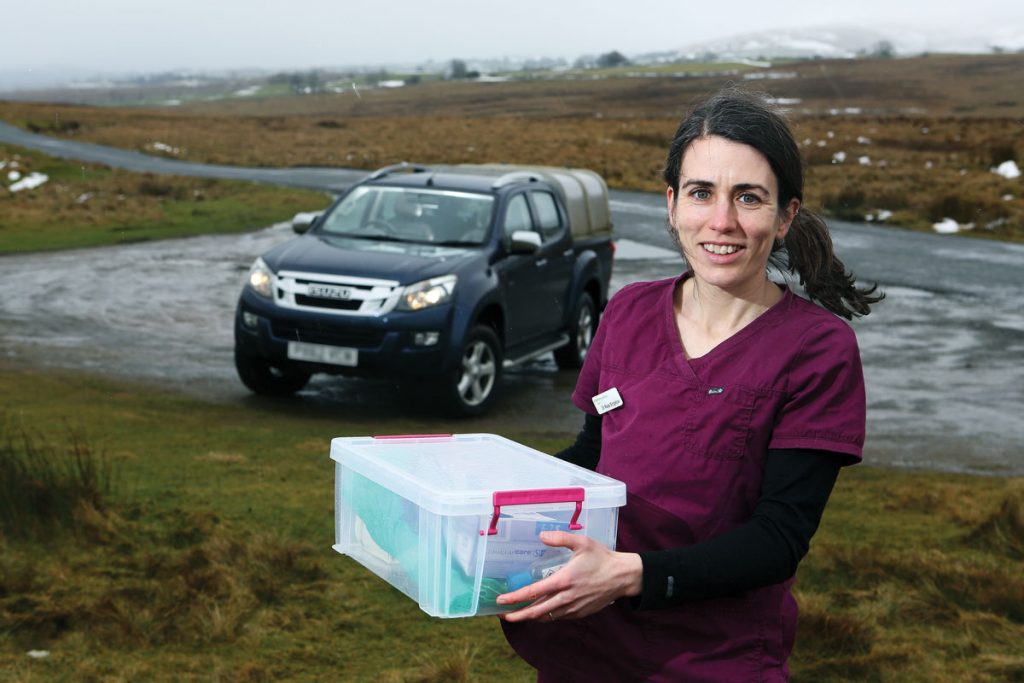Working Life: The 100-mile vaccine trips

Dr Rose Singleton on administering the Covid vaccine to the housebound in rural Cumbria
Monday
We’re getting ready to start vaccinating our housebound patients on Thursday. The week begins with identifying them. Our rural surgery in north Cumbria has a list of 4,400, spread over 100 square miles, including a high proportion of over-80s and a small residential home.
We use a three-list triangulation system. First, we find those who are coded as housebound (surprisingly few). Second, those who self-identified as housebound when they were offered the vaccination at our local hub, and finally, those our staff happen to know about.
The three lists become two routes – one each for me and my colleague Natalie.
Tuesday
Today we’re considering consent. Many patients can consent for themselves, and others can’t but might have a lasting power of attorney specifying who can do so on their behalf. The decision to vaccinate the final group is made under the best interests principles of the Mental Capacity Act, in discussion with next of kin if possible.
I check patients’ records for any cautions or contraindications, then add this information to a spreadsheet, which is my guide for the day. Then, making contact is straightforward.
I’m already a veteran of community Covid vaccination, having led the effort to vaccinate our care home residents. So I’ve learned that patients and carers have very few questions – they’re just thrilled to be getting vaccinated.
We have two vials totaling 22 doses, meaning our lists have to make exactly 11 each, with reserves in case of drop-outs. We need to tweak routes, swap patients and offer possible vaccination to some spouses and carers without making promises. It’s a delicate balancing act.
Wednesday
We consider the route and weather conditions. The logistics include the 16-mile return journey to collect the vaccine from the local hub, and returning the paraphernalia at the end of the day.
My route begins with the patients closest to the surgery, then sweeps out east and south in a wide arc before heading back north to vaccinate the patients closest to the hub, allowing me to return my kit before the hub closes.
Natalie’s loop covers the patients west of the surgery in a couple of small villages and hamlets. It snowed last night, but we’re determined not to let that stop us, and I’m grateful to my scrubbed-up pick-up Suzi (more accustomed to moving dogs, sheep and hay) for being an ideal mobile vaccination unit, resilient to whatever the weather throws at us.
Thursday
V Day. We complete our morning surgeries and leave our two experienced registrars in charge, with another partner quietly getting on with non-clinical work, just in case. It feels liberating to visit people at home without the hassle of putting on a flimsy plastic apron and gloves in biting wind at the side of the road.
We wear masks and carry a clean vaccination kit into each house, applying gloves once we’re inside to draw up and administer the vaccine. We’re welcomed with (socially distanced) open arms and many offers of tea, which we regretfully have to decline. We visit three centenarians, and one is disappointed to learn that he’s only the third-oldest person we’re vaccinating today.
By the end of the afternoon, we’ve covered more than 100 miles, vaccinating some of the most vulnerable people in our community and spreading a bit of hope.
Friday
Delivering housebound vaccinations is a mammoth task. It involves collaboration, smooth supply chains, detailed preparation, energy, imagination and good community knowledge – all squeezed around our normal GP work. The national standard operating procedure on vaccination in community settings has been our bible, and we’re hugely grateful to another local surgery for sharing its experiences.
My working life as a GP has been bruised and reshaped by the pandemic. Much of the job is unrecognisable from a year ago. Vaccinating the housebound is a welcome thread back to happier times, a chink of light in the darkness.
Profile: Dr Rose Singleton
Roles
GP partner in Cumbria
Hours worked
Typically six sessions per week
Pulse October survey
Take our July 2025 survey to potentially win £1.000 worth of tokens










